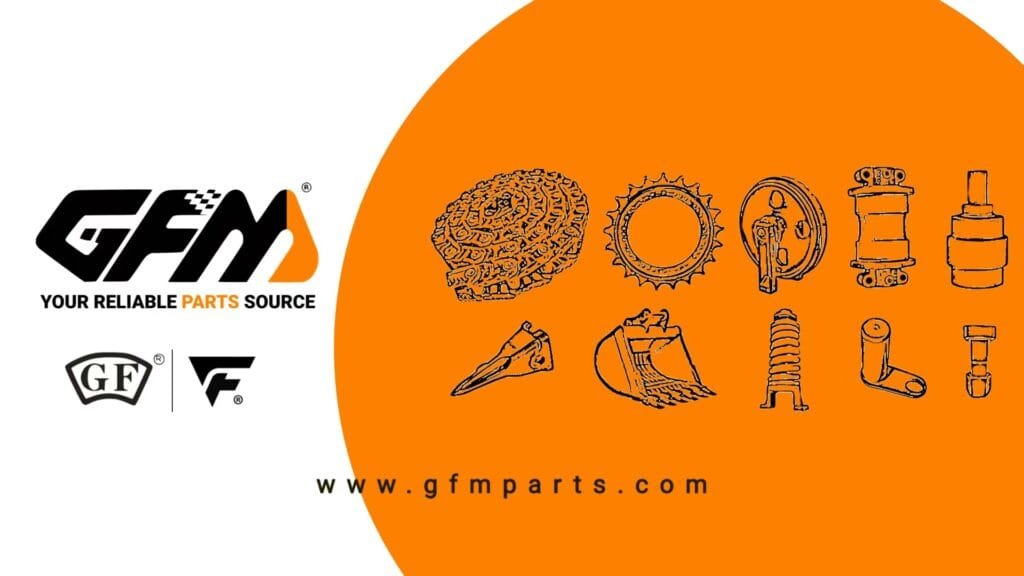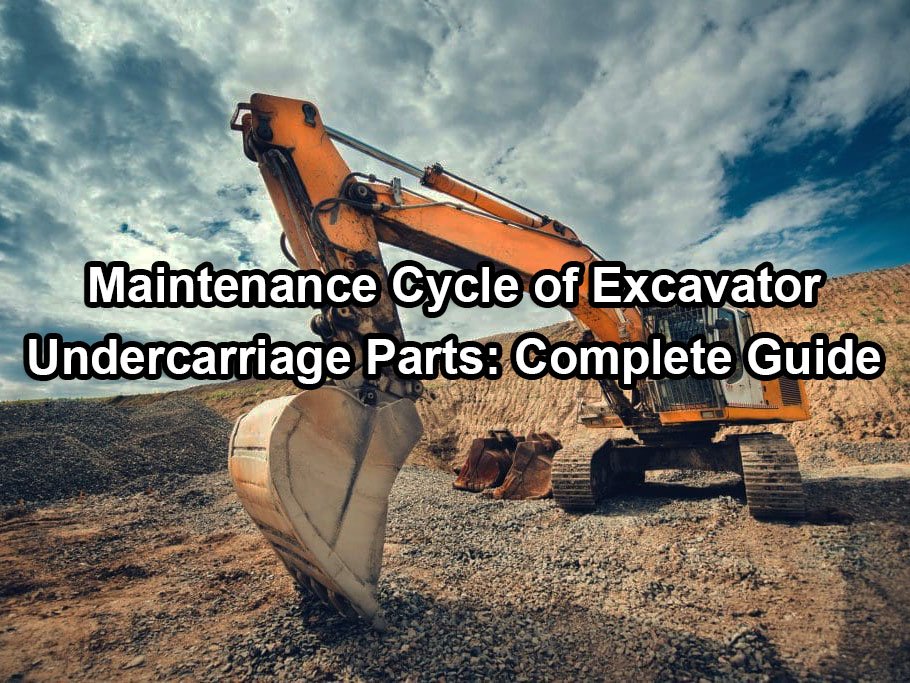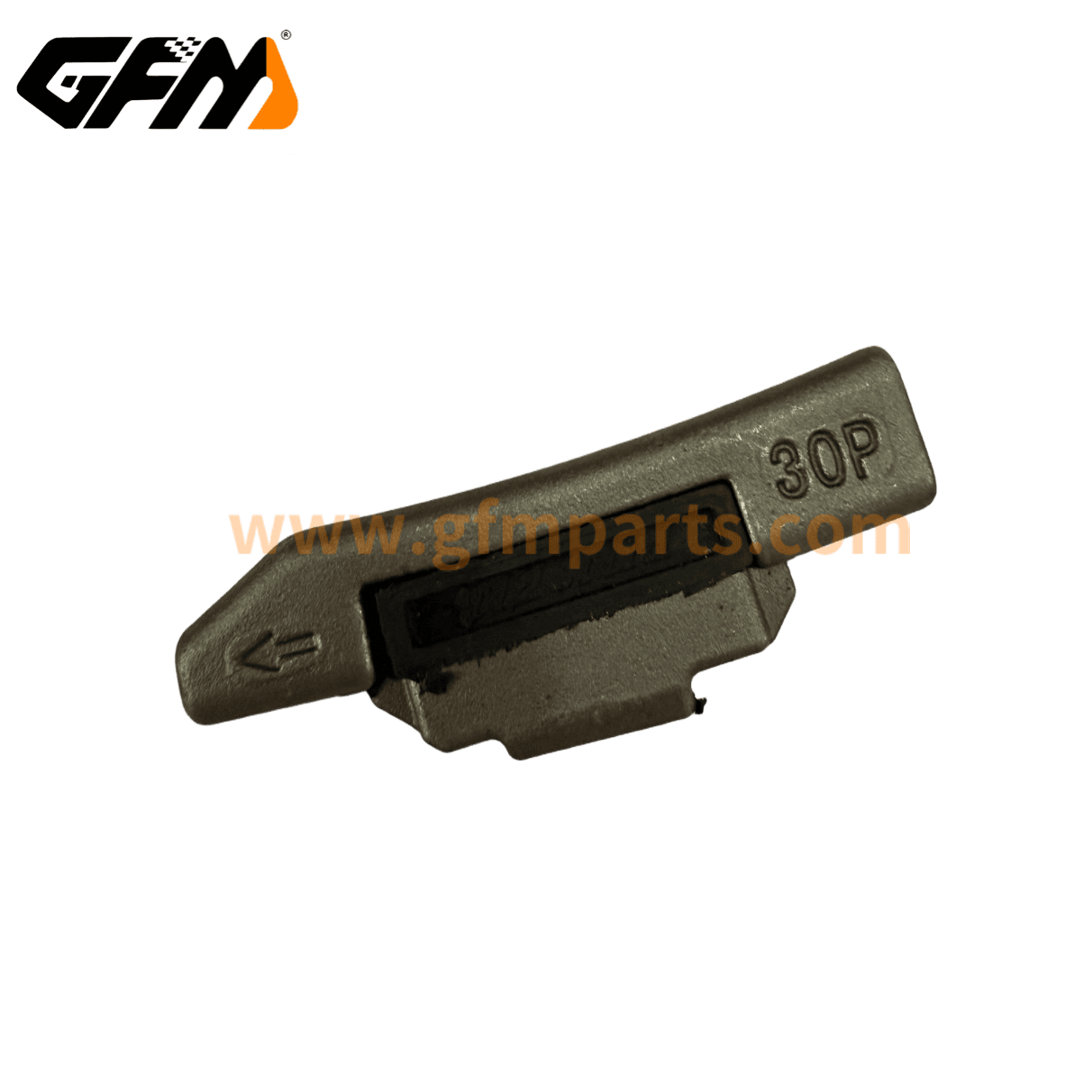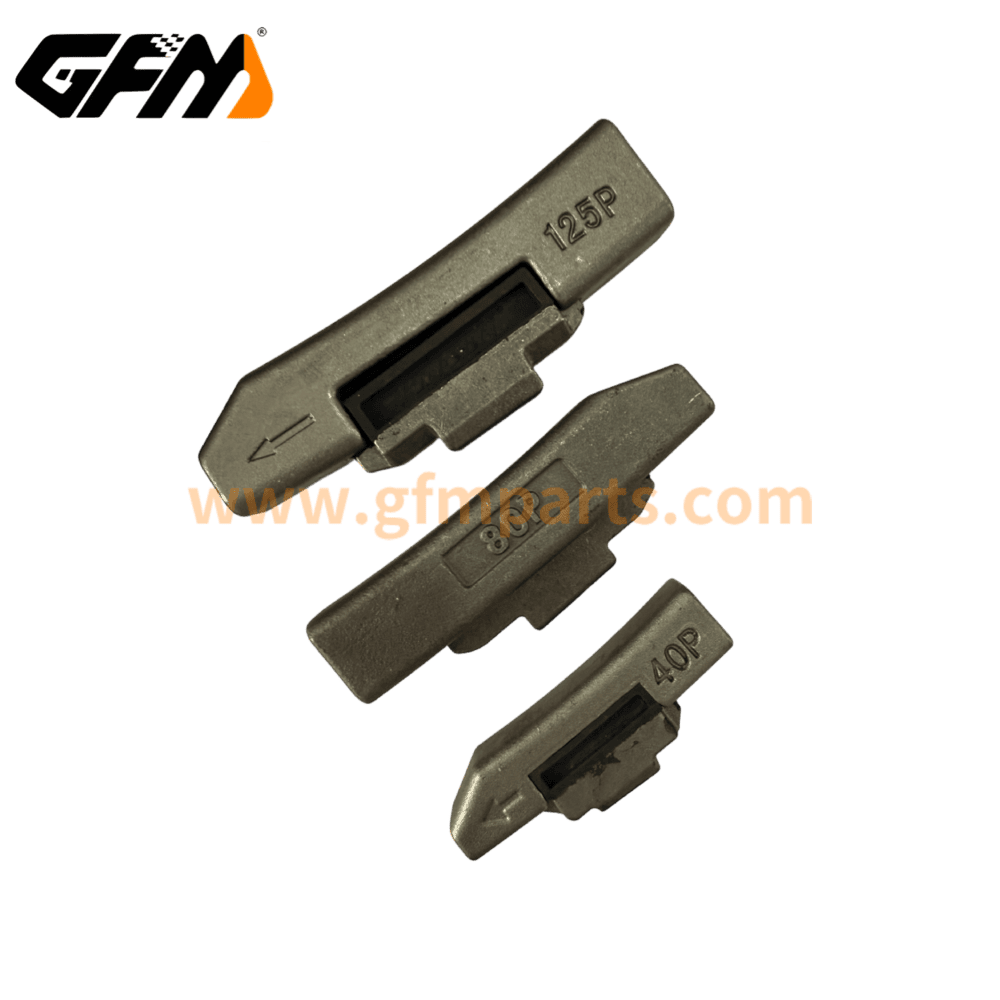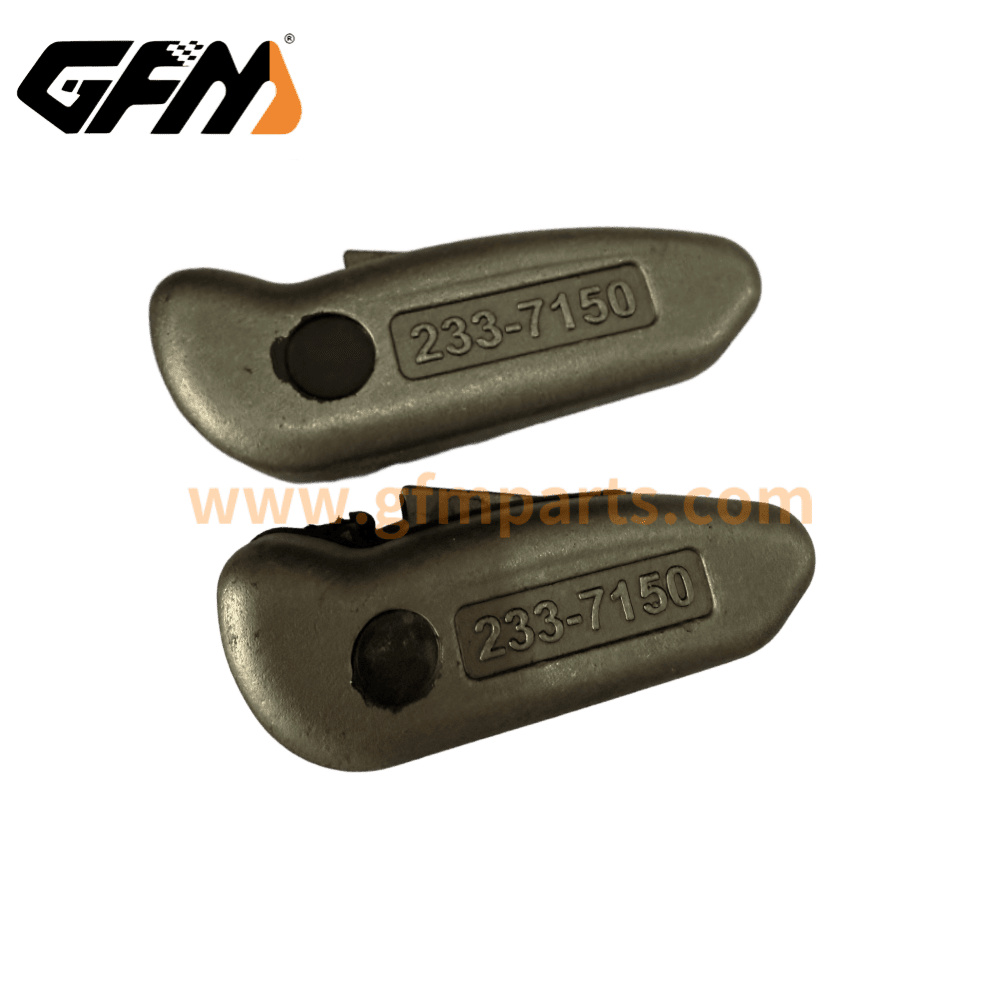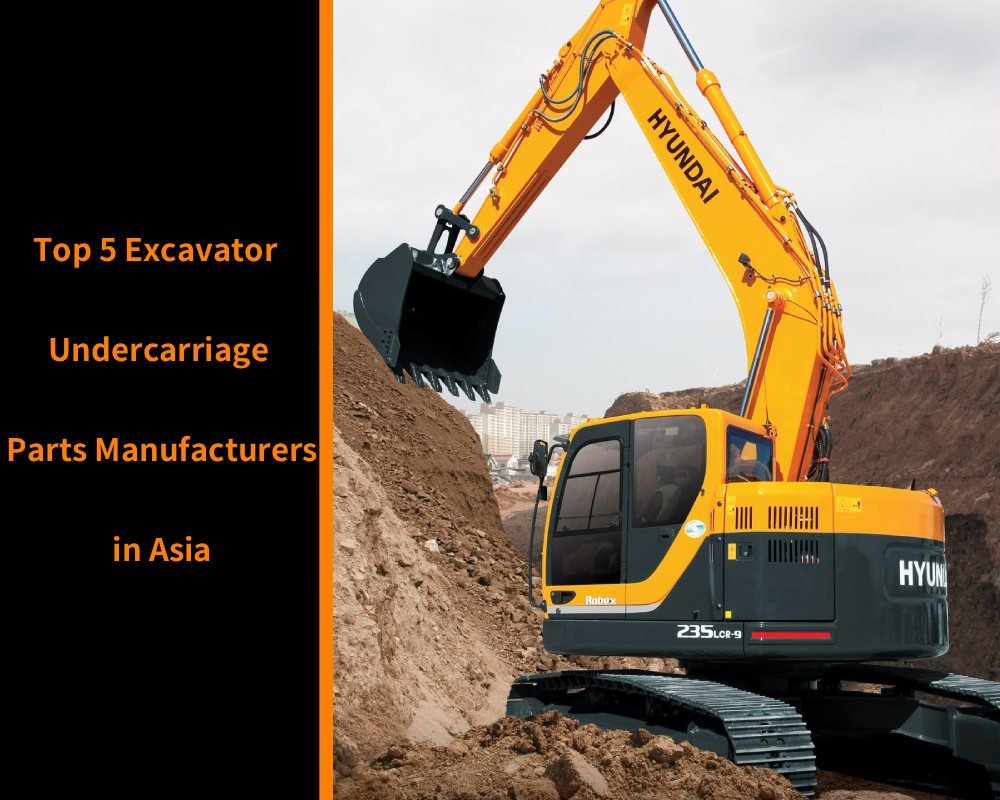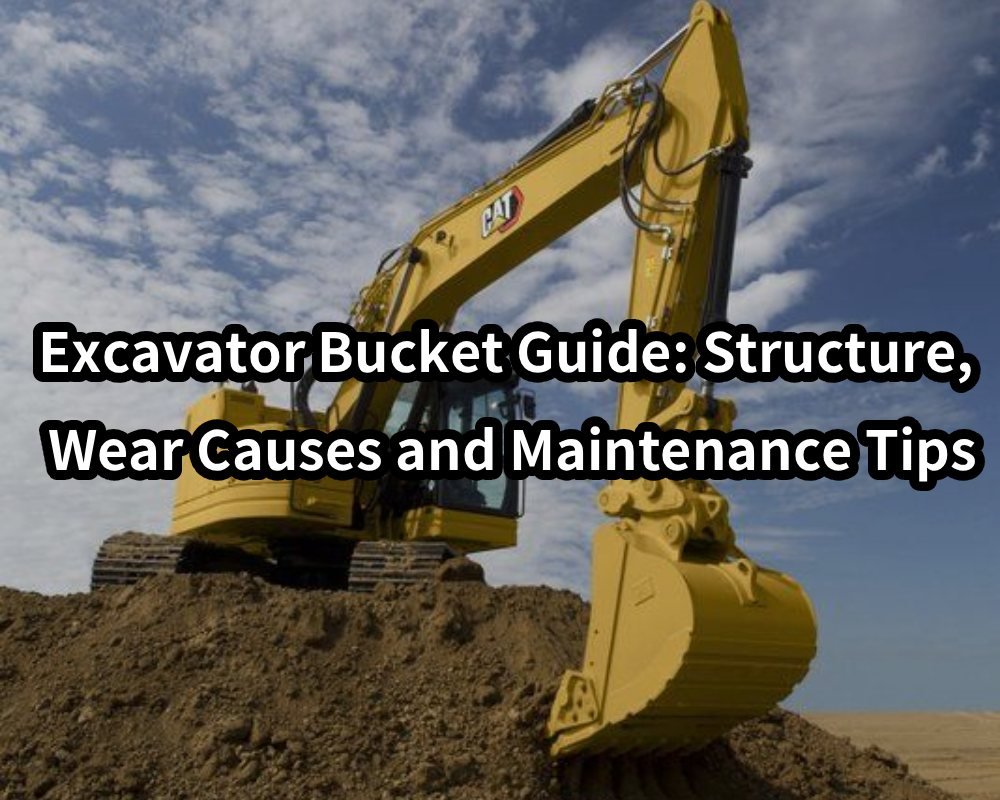Sebagai komponen inti yang menopang beban mesin konstruksi, perawatan komponen undercarriage ekskavator berkaitan langsung dengan masa pakai peralatan dan keselamatan operasional. Sebagai seorang profesional, produsen suku cadang undercarriage ekskavatorGFM, dikombinasikan dengan 15 tahun pengalaman industri, akan memberi Anda interpretasi terperinci tentang siklus pemeliharaan sistem sasis dan spesifikasi pengoperasian untuk membantu pengguna membangun sistem pemeliharaan yang ilmiah.
Perawatan dan Inspeksi Harian
Pemeriksaan Dasar Sistem Rel
- Pemeriksaan Ketegangan: Gunakan penggaris untuk mengukur kemiringan rel. Terlalu longgar akan menyebabkan tergelincir, dan terlalu ketat akan mempercepat keausan.
- Penghapusan Benda Asing: Singkirkan benda-benda yang tertanam seperti batu dan pecahan logam untuk mencegah tekanan abnormal pada mata rantai.
- Pemeriksaan Retakan Visual: Fokus pada pengecekan adanya retakan atau deformasi pada sambungan rantai dan las pelat rel
Pemantauan Status Sprocket dan Roller
- Uji Rotasi: Putar setiap badan roda secara manual untuk merasakan apakah hambatannya seragam (kemacetan abnormal menunjukkan kerusakan bantalan)
- Diagnosis Kebocoran Oli: Periksa apakah ada rembesan minyak atau penumpukan kotoran pada segel badan roda
- Metode Penandaan Keausan: Gunakan kapur untuk menandai garis referensi pada pelek roda, dan bandingkan offset pada hari berikutnya untuk menentukan kemajuan keausan
Poin-Poin Utama Perawatan Roda Pemandu dan Roda Penggerak
- Pemeriksaan Keterikatan Blok Gigi: Pastikan gigi penggerak dan selongsong pin jalur rantai terpasang sepenuhnya. Jika keausan satu gigi melebihi 5 mm, perlu segera diganti.
- Pengisian Gemuk: Isi ulang gemuk berbasis litium melalui puting gemuk (pilih NLGI Grade 2 untuk suhu > -20℃)
Daftar Periksa Pra-Operasi
- Deteksi ketegangan lintasan: Gunakan penggaris untuk mengukur kemiringan rel (nilai yang disarankan 30-50mm), dan sesuaikan pada waktunya jika kekencangannya tidak normal
- Status sproket/rol: Periksa secara visual apakah ada kebocoran oli, kebisingan abnormal, dan apakah suhunya tidak normal (standar ≤65℃)
- Verifikasi pengencangan baut: Fokus pada pemeriksaan baut pemasangan roda pemandu dan roda penggerak (lihat manual peralatan untuk nilai torsi, biasanya baut M24 perlu mencapai 450N·m)
- Pembersihan benda asing: Singkirkan batu dan pecahan logam di antara pelat lintasan untuk mencegah konsentrasi tegangan merusak selongsong pin
Titik Pemantauan Operasi
- Periksa apakah lintasan menyimpang setiap 2 jam (deviasi yang diizinkan ≤5%)
- Perhatikan sumber getaran abnormal, terutama suara sasis abnormal saat berbelok
- Pantau suhu motor hidrolik (kisaran normal 40-80℃)
Proses perawatan pasca operasi
- Bersihkan sasis dengan pistol air bertekanan tinggi (tekanan yang disarankan 8-12MPa, sudut 45°)
- Periksa tanda keausan pada track shoe (GFM merekomendasikan untuk mengganti track shoe jika keausan melebihi 10mm)
- Pengisian ulang gemuk: Tambahkan gemuk berbasis litium ke setiap titik pelumasan setiap 8 jam
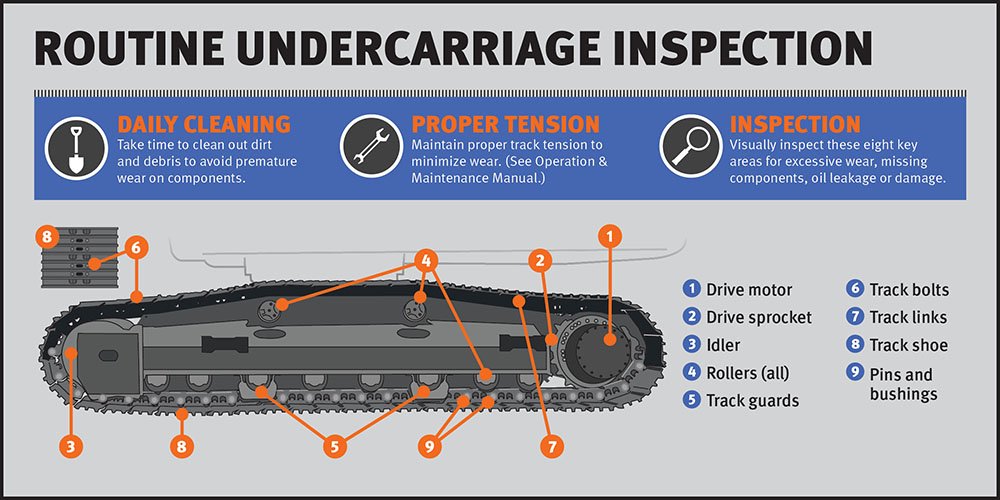
Siklus pemeliharaan berkala
Perawatan mingguan
- Pemeriksaan mata rantai lintasan: Mengukur perpanjangan mata rantai (nilai standar <3%)
- Jarak bebas roda gigi penggerak: Gunakan feeler gauge untuk memeriksa celah sisi gigi (disarankan 0,2-0,4 mm)
- Pemeriksaan pegas penyangga: Mengukur perubahan panjang bebas (toleransi yang diizinkan ±5mm)
Perawatan bulanan
- Rakitan trek terbalik: Terapkan penyesuaian trek 180° untuk memperpanjang umurnya
- Uji segel roda lintasan: Lakukan uji perendaman selama 3 menit, dan volume kebocoran <5ml/menit
- Pengencangan baut sekunder: Kencangkan kembali semua konektor sesuai dengan torsi standar
Pemeliharaan mendalam triwulanan
- Ukur jarak bebas selongsong roda pemandu (nilai batas 1,5 mm)
- Periksa fleksibilitas putaran selongsong pin lintasan (resistansi putaran ≤15N·m)
- Periksa bentuk gigi roda penggerak (penggantian diperlukan jika keausan melebihi 20% dari tinggi gigi)
Perombakan Tahunan
- Deteksi cacat logam: Deteksi partikel magnetik pada bagian-bagian utama yang menahan beban
- Pembaruan sistem penyegelan: Ganti semua cincin-O dan segel oli
- Modifikasi sistem pelumasan: Peningkatan ke perangkat pengisian oli otomatis
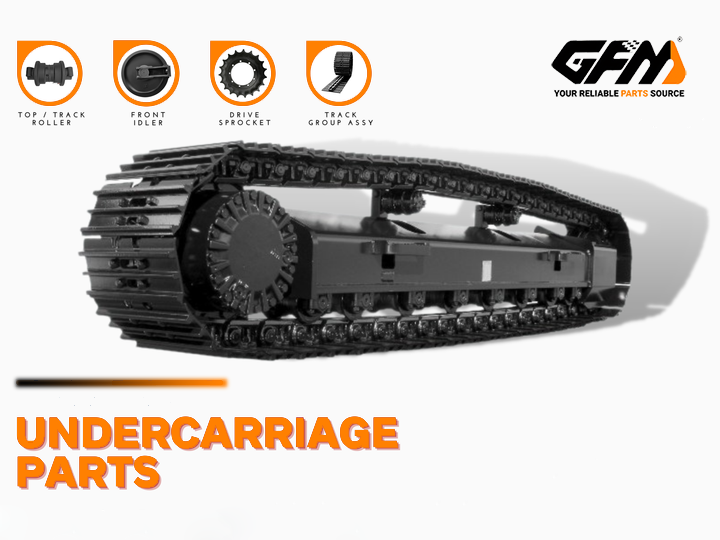
Referensi untuk siklus penggantian komponen utama
▶ Perawatan dasar 50 jam
Jumlah injeksi gemuk bantalan roda pemandu: 20-30ml/waktu
Frekuensi injeksi gemuk roda sproket: isi ulang setiap 3 jam operasi
Pelumasan pin rantai penghubung: pelumas anti karat semprot (produk WD-40 dilarang)
▶ Inspeksi komponen inti 250 jam
Pengukuran pitch track rantai: gunakan jangka sorong khusus untuk mendeteksi (batas keausan: pitch standar + 3%)
Evaluasi talang gigi penggerak: ketebalan ujung gigi < 60% dari ukuran asli perlu diganti secara berkelompok
Jarak bebas aksial roda pendukung: deteksi pengukur feeler (nilai yang diizinkan < 2mm)
▶ Perawatan sistem mendalam selama 500 jam
Rakitan rel terbalik: Tukar rel kiri dan kanan secara simetris untuk memperpanjang masa pakai
Pemeriksaan bushing roda pemandu: Ukur ekspansi diameter dalam setelah pembongkaran (nilai batas: ukuran asli + 0,8 mm)
Uji beban awal pegas tegangan: Perbedaan kompresi > 10% memerlukan penyesuaian
▶ Penggantian komponen kunci 1000 jam
Standar penggantian selongsong pin jalur rantai: Ketika diameter luar selongsong pin aus > 8mm atau terjadi kemacetan putaran
Deteksi pegas penyangga: Harus diganti jika panjang bebas dipersingkat lebih dari 10%
Pengencangan baut kendaraan penuh: Kencangkan secara bertahap sesuai dengan nilai torsi yang ditentukan oleh pabrikan
▶ Perawatan perbaikan 2000 jam
Pembongkaran rakitan roda jalan: Periksa alur keausan tapak roda (kedalaman > 5mm memerlukan penggantian)
Deteksi deformasi rangka lintasan: Gunakan instrumen penyelarasan laser untuk mengukur kesalahan paralelisme (> 3mm/m memerlukan koreksi)
Penggantian paket segel motor travel: Mencegah oli hidrolik mengontaminasi bantalan
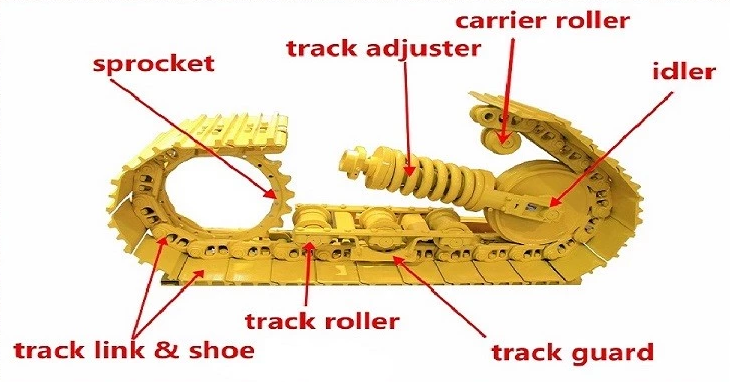
Standar verifikasi kualitas pemeliharaan
- Tes perjalanan: Perjalanan garis lurus deviasi 50 meter < 2 meter
- Uji beban: Parkir di lereng 20° selama 15 menit tanpa tergelincir
- Uji kenaikan suhu: Kenaikan suhu bantalan ≤35℃ setelah 2 jam operasi terus menerus
Tanya Jawab Umum
T: Bagaimana cara mengatur frekuensi pemeliharaan di musim hujan?
A: Tingkatkan pemeriksaan segel roller pendukung menjadi seminggu sekali dan gunakan gemuk tahan air GFM (kode WP-220)
T: Tiga penyebab utama keausan lintasan yang tidak normal?
A: ① Ketegangan yang tidak tepat (42%) ② Benda asing di tanah (35%) ③ Deviasi pemusatan (23%)
T: Bagaimana menentukan apakah pemeliharaan profesional diperlukan?
A: Ketika ada fenomena penyimpangan yang gagal disesuaikan selama 3 kali berturut-turut, atau perbedaan suhu roller pendukung di satu sisi lebih besar dari 15℃
| Dapatkan penawaran cepat dan gratis | Surel: henry@gfmparts.com | WhatsApp: +86 17705953659 |
